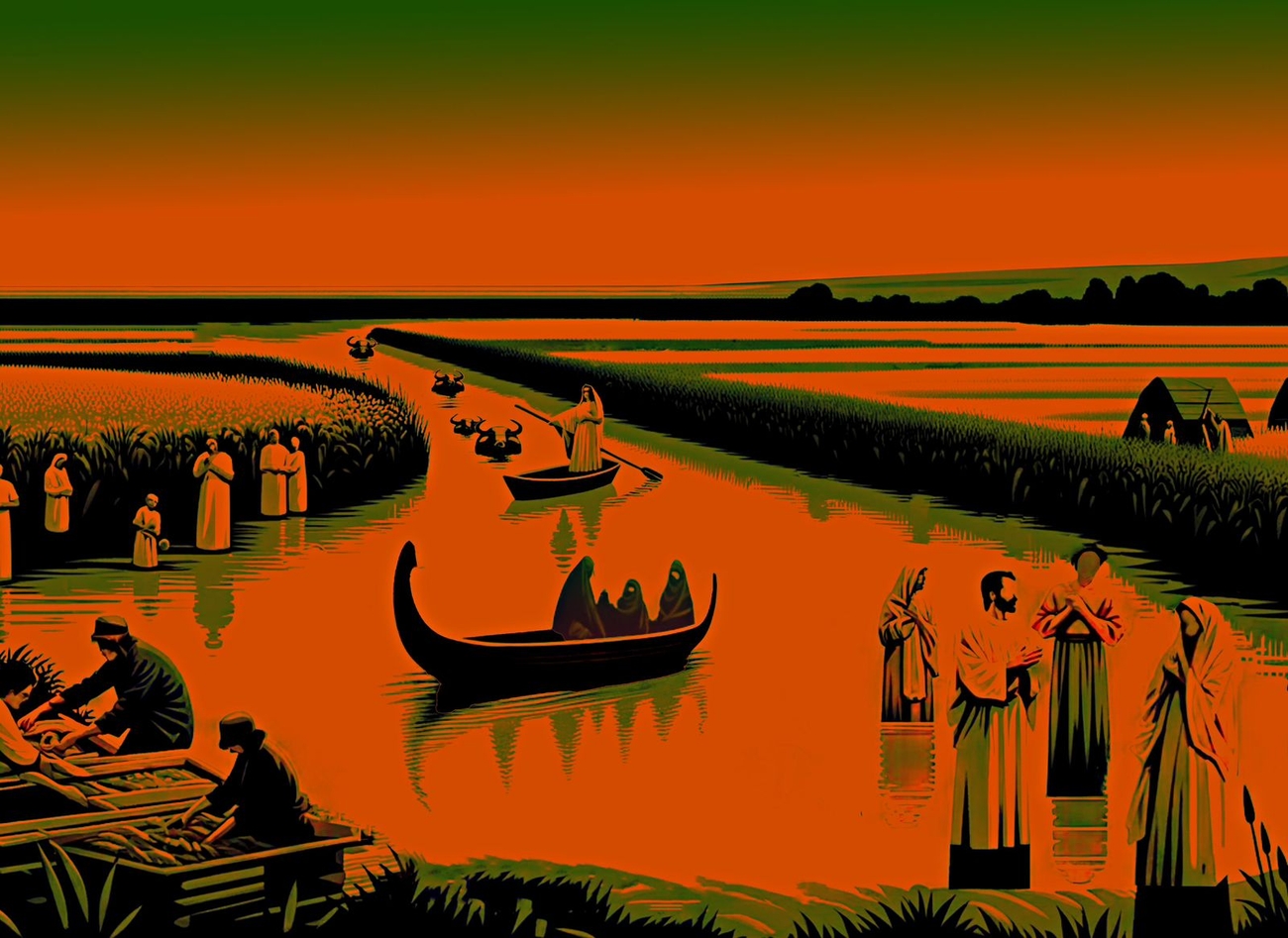Living Upstream: A Brief history of the Mandaeans


The Mandaeans have gone through history under various names, encompassing designations such as Chaldean, Nasoraean, Mandaean, and Sabean. Occupying Southern Mesopotamia (Nowadays Iraq and Southwest Iran), their historical lineage is said traced back to the Chaldeans referenced in early Biblical texts, that later assimilated into the greater Akkadian empire. Significantly, Mandaic Aramaic retains a primacy marked by the highest number of Akkadian loan words among Aramaic dialects, underscoring a tangible connection to ancestral lands and indigenous communities of antiquity.
In the era of the Achaemenid empire, the nomenclature "Kaldaye" or "Kaldaiutha" no longer identified an ethnic group, but rather identified a class of priest like astronomers immersed in celestial studies in ancient Babylonia. According to Maimonides, an early Jewish philosopher and codifier of Jewish law, the terms Kasdim, Chaldean, Sabean, and Mandaean successively characterize the same people across biblical and Talmudic epochs.
The historical fluidity of titles within Mandaean history is attributed to the historical merging of ethnic groups and motivations for self-preservation. The historical account within the scroll titled "Haran Gawaitha" narrates the migration of Nasoraeans, high priests from Judea (affiliated with the Essenes) to the Median mountains under the protection of King Ardawan II (Artabanus II of Parthia). This migration introduced significant teachings, including the sacred ritual of Baptism or Musbuta (Mandaic Aramaic). The designation "Nasoraean" remained a designation for the high priests, while the term "Mandaean" becomes characteristic of the lay people at a later stage.
While the majority of Nasoraeans migrated southward, integrating with indigenous Babylonians, some may have found settlement in Assyrian cities such as Harran in northern Mesopotamia. The "Harranian Sabians" adopted a Hellenistic variant of the faith, while preserving vestiges of ancient Babylonian and Assyrian traditions. The relationship between both sects remains a subject of debate, yet both groups appear to have retained influences from these ancient civilizations. Contemporary Mandaeans persist in their ties to astronomical heritage, manifested in the bestowal of secret astrological baptismal names upon newborns and the frequent mention of celestial bodies in their texts.
The custodians of the astronomical tradition found themselves entangled in discord with various religious factions. Allegations emerged, asserting that the Mandaeans, in their observance of the stars, were engaged in worship rather than mere study. Despite the Mandaeans professing a monotheistic devotion to a singular deity, they became recurrent targets of assaults and faced accusations of aligning with paganism. This dichotomy between their avowed monotheism and external misperceptions fueled tensions, underscoring the challenges faced by the Mandaeans. This prompted the Mandaeans to relinquish the Kaldaye title, embracing the name "Sabaean" as a protective measure against religious persecution. Al-Nadīm, an Arab historian from Baghdad around 990 CE, observes that during the caliphate of el-Mamun (ca. 786-833 CE), the Chaldeans were not regarded as adherents of the three principal Abrahamic religions. This led to the relinquishment of their Chaldean identity by this ancient community, as Sabeans were accepted as “People of the Book” in the Quran.
As the Mandaean community gradually diminished into a minority after many centuries of attack & oppression, a considerable number sought habitation in the outskirts of major urban centers such as Ammara, Basra, and Nasiriyah in Iraq and Khuzestan in Iran. The imperative of daily baptism necessitated their proximity to water sources. Settlements emerged in the marsh districts surrounding the regional hub of al-Wāsiṭ and the village of Sitrāyā, likely a modest enclave. Another village, Ad-Dūl, inhabited by these Mandaeans, remains obscure in its specifics but may have been rather secluded, connected with aṣ-Ṣalīq and situated on a lake within the Marshes.
Better-known locations in the vicinity included the larger town of al-Ǧāmida and the river station of al-Ḥawānīt, where reports indicate the presence of Mandaeans, all situated in and around the northeastern fringes of the expansive Marshes in southern Iraq, proximate to the Tigris.
In exploring the historical narrative within my family, it is pertinent to shed light on the interconnected relationship between my great-grandfather, Nafil Al Khamisi, and the Ahwari community. Nafil Al Khamisi, a notable figure in my family’s heritage, built a date farm strategically located in the village of Qal’at Saleh, nestled between the urban centers of Ammarah and Basra. He also distinguished himself as a skilled boat builder. This dual role facilitated substantive associations with the Ahwari population.
Qal’at Saleh, owing to its strategic adjacency to the Tigris River, emerged as a communal focal point, fostering regular exchanges between diverse groups. Nafil Al Khamisi's agricultural endeavors near waterways prompted frequent interactions with the Ahwari, whose way of life was intricately tied to the marshlands and aquatic activities. This symbiosis of agricultural and maritime pursuits delineated a nuanced relationship, characterized by economic and cultural interchanges evident in day-to-day encounters between these distinct indigenous groups.
The historical resonance of these interactions underscores an enduring connection between the Mandaean and the Ahwari communities. The latter, recognized for their adaptability to marsh environments, engaged in fishing, agriculture, and other water-dependent activities.
The dynamics of this relationship encompass economic interdependence, shared resources, and potential interfaith interactions. Nafil’s proficiency in both agriculture and boat building emphasizes the complementary nature of the Mandaeans' agrarian pursuits and the Ahwari's aquatic expertise.
While my family's narrative provides an intimate perspective, a more extensive academic inquiry would be necessary to form a comprehensive exploration of archaeological artifacts, archival materials, and oral traditions. Such scholarly endeavors contribute to a nuanced understanding of the sociocultural and economic interplay that has shaped the historical landscape of the Tigris River region, illuminating the intricate narrative woven by these indigenous communities over time.